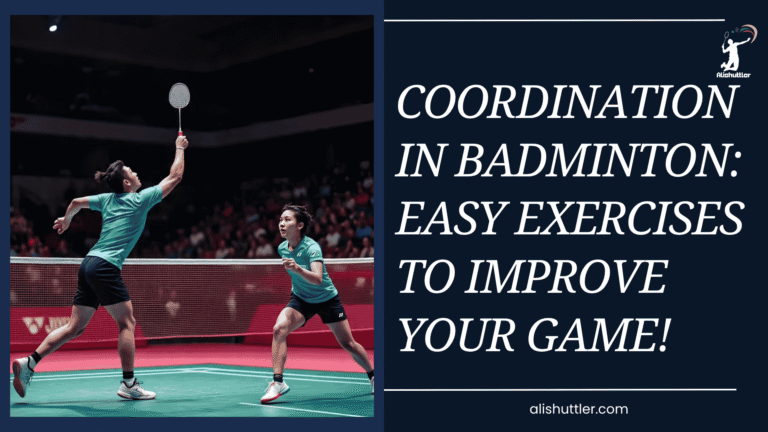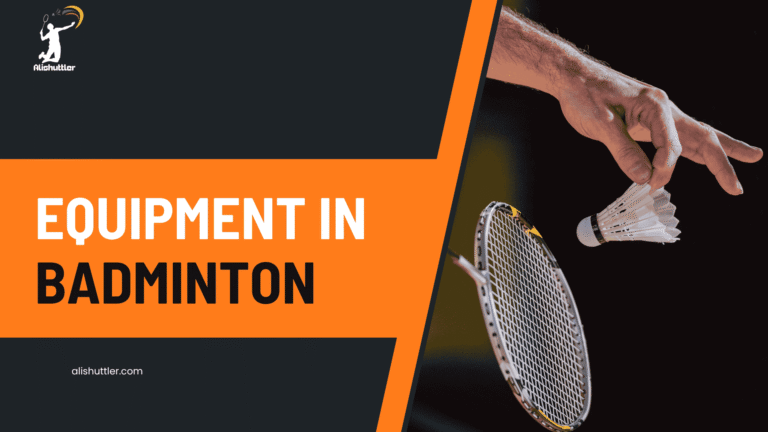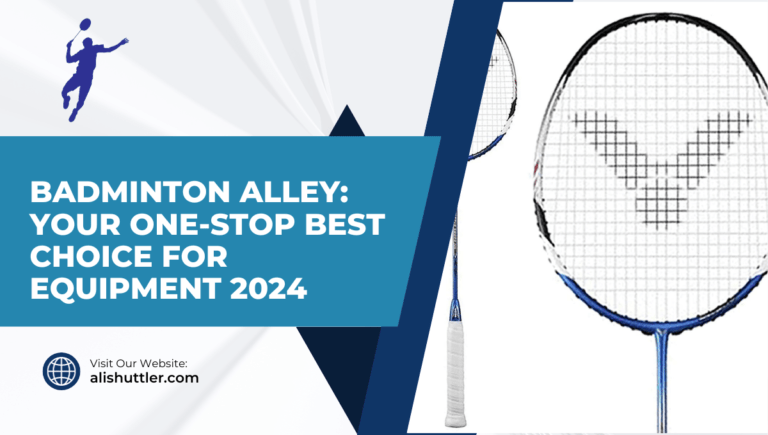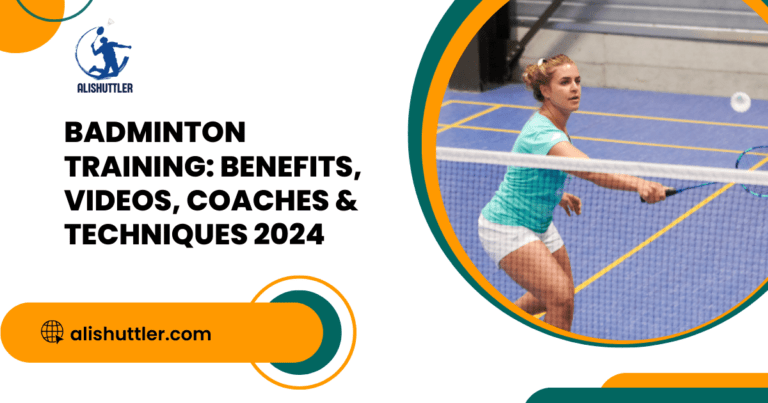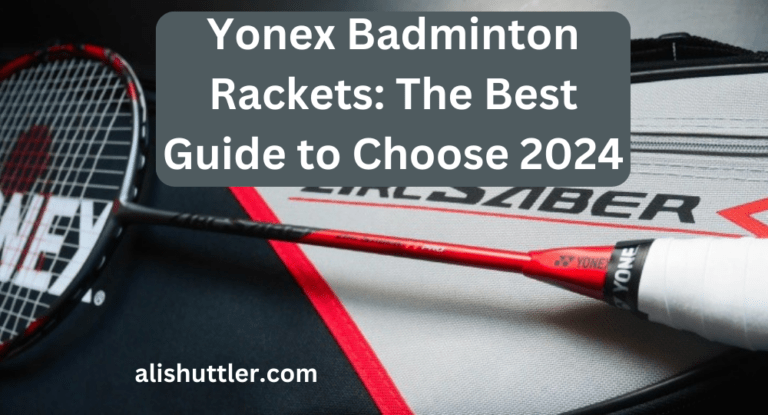How to hit faster in badminton means employing fast reflexes, powerful wrist actions, and correct footwork to accelerate your hits.
Agile grip, short swings and sharp timing assist to increase shot velocity. Fast hits make it difficult for your opponent to maintain the pace, giving you the advantage in rallies.
A lot of players want to hear the precise steps, drills and tips to develop speed. The next section lists easy methods you can attempt.
The Biomechanics
Now, hitting faster in badminton isn’t just about arm strength; it’s a combination of your total body motion, your torso rotation, and your wrist action. Incorporating various badminton exercises helps improve smash speed, leveraging fundamental biomechanics to blast the shuttlecock with velocity and precision.
Kinetic Chain
The kinetic chain connects you from the ground up, especially when playing badminton. When you hit a powerful badminton smash, it begins from your legs propelling off the court, travels through your hips and core, and concludes with your arm and wrist. Fast action in badminton, like a quick lunge or smash, places more force on the knees and ankles, so every step has to be fluid and connected for maximum smash speed.
Research indicates that the ground reaction force transects the anterior cruciate ligament (ACL) just prior to take off, making knee and hip motion critical for both speed and safety. To test if your kinetic chain is functioning properly, observe whether your motion is seamless or stutters. If your knees or hips fall behind, you lose power in your badminton game.
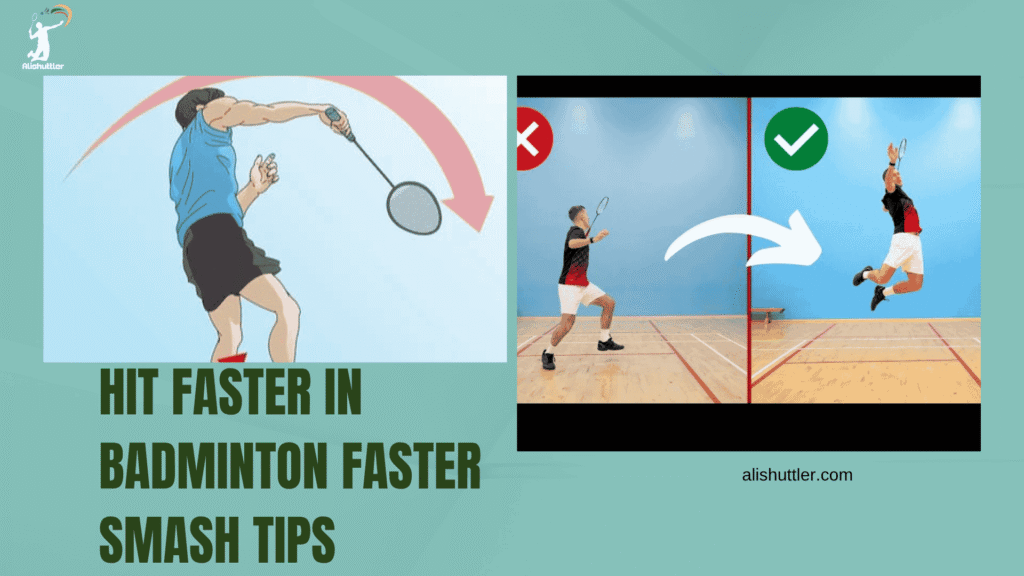
According to a biomechanical study of lunge tasks, improved joint motion results in quicker, more powerful badminton shots and reduced injury risk, emphasizing the importance of proper footwork techniques.
- Shadow swings emphasizing fluid transfer from your legs to your arm
- Slow-mo smashes, ensuring each segment in turn.
- Jump lunges with racket swings to work on whole-body power
- Video to identify any breaks in your chain
Body Rotation
Torso rotation is one of the main sources of smash power. By rotating your hips and shoulders as you swing, you generate power that your arm alone can’t muster. A strong core to help support this twist, so planks or Russian twists can help.
It’s the stance phase, from touchdown to take-off, that you establish your rotation and synchronize it with your swing for an elegant strike. Timing is equally as important as strength. Twist too early or too late and it fouls up not just velocity, but accuracy.
Experiment with various angles and velocities to discover what yields optimal results for you.
Wrist Action
It’s a powerful, springy wrist that provides your shots their final spurt of velocity. The wrist snap converts racket head speed to shuttle speed and a relaxed grip allows you to move your wrist faster. When you smack, do your best to keep your hand loose and then snap at the very last moment.
Wrist curls, stretches, and ninja-focus snaps create strength and control. This aids precision, ensuring your rapid fire still hits your targets. If your wrist is rigid and stressed, it’s difficult to maximize your swing.
Biomechanics in Training
Apply these principles in drills each time you practice. Mind your mechanics, exercise every link in your chain and experiment with different ways of moving.
Test your progress with slow-motion videos or coach feedback. Keep training both strength and timing. Rest and recover to avoid joint overload.
Faster Hitting Technique
In badminton, achieving fast shots, like a powerful badminton smash, requires more than just brute strength. With the right badminton training techniques, timing and control become essential ingredients for enhancing your overall performance and developing an effective playing style.
1. The Grip
A good grip lays the foundation for speed. Experiment with both fundamental and panhandle grips to discover what suits your style and shooting preferences.
A firm but not tight grip enables your wrist to whip fast. Excess tension decelerates the swing. When you hit, squeeze the grip a little more. This pressure at contact, combined with finger snap, makes your shot faster.
Racket handle should not slide in your hand. Rotating through forehand, backhand, or panhandle grips allows you to respond to a variety of shots, so work on grip transitions until they become seamless and fast.
2. The Swing
Swing away, full-force, to develop speed and power. Don’t restrict yourself or use just your arm. The swing should initiate from your shoulder, incorporate your entire arm, and complete with wrist action.
Adding shoulder turn gets the racket head moving faster, and this is essential for powerful smashes or clears. The movement must be a single fluid line, not jagged or rigid.
Imagine the racket head following a line from behind your back and over your shoulder. Keep the swing on the racket side. Weak swings tend to get bogged down because the path is off or the energy isn’t transmitted cleanly from body to racket.
Getting the right stroke is more important than muscle. A bigger backswing provides additional time and room to accelerate. Most players don’t go to the full extent missing out on additional power.
3. The Contact
Striking the shuttle high, within arm’s length, provides the optimal angle and velocity. The racket face needs to be flat or slightly angled based on your objective. Sweet spot and wrist snap hits go faster.
Try hitting with various parts of your racket to get a feel of how the shuttle reacts. Timing is the secret. Even a fraction of a second late, and the shot’s direction or velocity varies.
Observing the shuttle and tracing its descent guides you to hit at the perfect split-second.
4. The Follow-Through
Complete every shot with a complete follow through for precision. Stopping short can cause you to lose balance or power.
Scan your body and racket after every shot. A solid follow through keeps you protected and prepared for the subsequent hit. Doing follow-through drills can help train muscle memory.
That keeps you balanced, so you can get back quickly for the next play.
Explosive Footwork
Explosive footwork is the heart of quicker hitting. Those players that develop explosive footwork are fast, balanced, and reactive against any competitor. This particular skill fuses power, quickness, and balance.
It requires consistent practice, employing targeted drills and proper form, to develop footwork that withstands actual game intensity. Moves such as the China jump combining both vertical and diagonal movement aid in reaching high shots without sacrificing your balance.
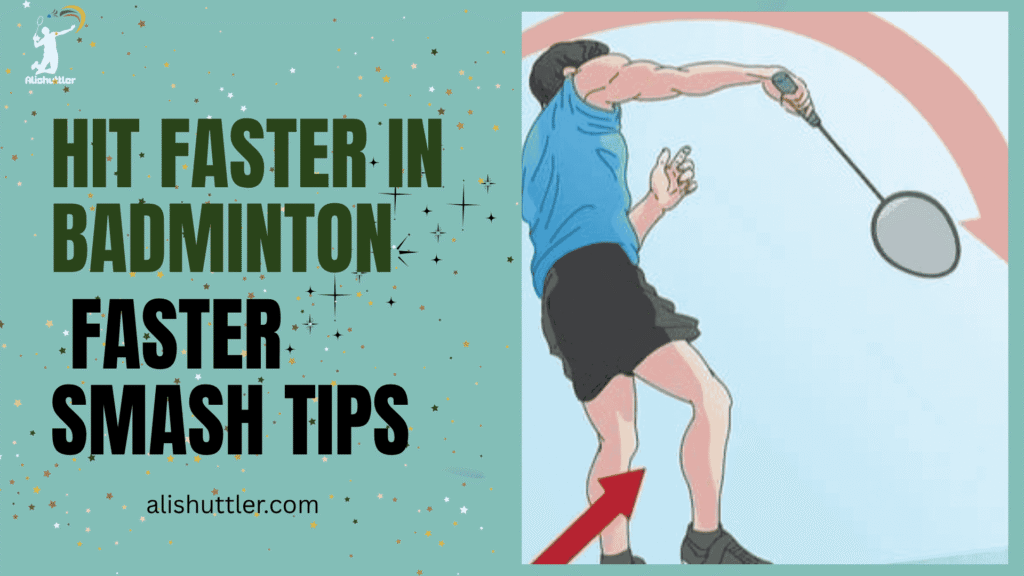
Working on lateral box jumps, shuttle runs, and chasse steps can help build the speed and sharp reaction time required for elite play.
Split Step
A split step prepares players for their opponent’s next shot. This move has a small hop on the opponent’s hit, so the body is poised and balanced. It’s not simply about timing your jump.
The split step should be timed to coincide with the opponent’s swing to maximize its impact. Split step-like timing drills, such as shadow practice or consecutive bound into immediate direction change hops, develop muscle memory.
Others tinker with foot position—wider base, center of gravity shifted in one way or the other—to test what yields the quickest launch. It’s more important to discover what feels natural and keeps you balanced than to emulate a prescribed style.
Stance
A balanced stance implies feet roughly shoulder-width apart, knees flexed, and weight on the balls of the feet. This allows you to move anywhere and strike shots in good form.
When transitioning from defense to offense, or from forehand to backhand, fluid stance shifts maintain your motions crisp. Observing video replays or requesting feedback can assist in identifying detrimental habits, such as standing too upright or allowing feet to drift too close together.
These small fixes can have a big impact — especially on those who pick up the game on the street and never receive formal training.
Movement
Lateral moves, such as side shuffles and chasse steps, enable players to cover the court without crossing their feet or sacrificing balance. Forward and backward sprints—cones for targets develop the skill to get to the net or deep corners without decelerating.
Short, quick steps are better than long strides for changing direction fast. Cone drills help training feel more like play, compelling rapid decision-making and cleaner footwork.
Shadow movements are another excellent weapon in your arsenal—by shadowing rallies with no shuttle, players can slow things down, focus on technique and shatter old habits.
Agility Drills
Agility drills develop the quickness and power required for explosive maneuvers. Easy choices such as shuttle runs, ladder drills, and lateral box jumps are effective.
Interspersing these into daily routines helps enhance reflexes and court movement. Working through these drills as often as possible is critical, particularly because footwork is one of the most difficult things to master.
Power Conditioning
Power conditioning in badminton is about more than just getting ripped. It’s about mixing power, mechanics and intelligent conditioning to generate harder, faster shots. Skill redirects power more effectively than raw strength.
Racket length, string tension and sweet spot count, but technique and strength will forever be the biggest factors. Even the top gear can’t compensate for bad technique or flabby muscles.
Strength Training
A balanced routine will work legs, core, shoulders, and forearms, as these regions are crucial in each stroke. Squats and lunges develop leg strength for improved push-off and balance.
Resistance bands assist with muscular endurance and stabilize joints during rapid changes of direction. Track weight, reps and sets – always – to see progress and avoid plateaus.
Throw in some compound moves like deadlifts and pull-ups for total-body power—these engage multiple muscle groups simultaneously and reflect the dynamic movement patterns in badminton.
Plyometrics
| Exercise | Focus Area | Benefit |
|---|---|---|
| Jump Squats | Legs, Core | Boost explosive power |
| Box Jumps | Calves, Quads, Glutes | Improve speed, reaction time |
| Medicine Ball Throws | Shoulders, Arms, Core | Add upper body explosiveness |
| Lateral Bounds | Inner/Outer Thighs | Aid quick court movement |
Jump squats and box jumps develop leg speed and bounce, allowing you to arrive to the shuttle quicker and strike harder. Medicine ball throws instruct the upper body to cooperate with the lower, injecting power into smashes and clears.
Work on plyometric drills two to three times a week to develop muscle memory and coordination that carry over to hard, quick shots.
Core Stability
A powerful core keeps you stable and allows you to direct energy into strikes. Planks, Russian twists and side planks increase core stability and aid shot control.
Always activate your core, even on jumps and lunges, to shield your back and generate more force with every swing. Stability balls and balance boards add extra challenge.
They keep your core muscles firing, which is useful for sudden shifts in direction or off-balance shots.
Technique and Equipment Factors
Technique matters more than brute strength. A bigger backswing, rapid wrist snap and forearm twist can all contribute to added power and speed. The sweet spot on the racquet miss it and you lose power.
Racket length, balance point, and string tension make a difference. Longer rackets (roughly 10 mm more) provide additional leverage, while beginning string tension at 23 lbs for men and 21 for women is a solid baseline.
Tweak in small increments to discover what feels optimal.
Speed Drills
Speed drills are crucial for developing faster shots and improving badminton speed, enhancing reactions, and increasing endurance. They fit all skill levels and can be performed solo or with others, making them essential badminton exercises for players.
Wall Hitting
Bashing against a wall is the easiest way to train alone. It builds timing and accuracy, because every little error rebounds immediately. Begin standing near the wall and then retreat to the doubles service line or beyond.
Variety your shots—smashes, drives, drops—so you can deal with whatever comes at you in a real match. Try recording sessions to catch those swing, footwork or speed shifts.
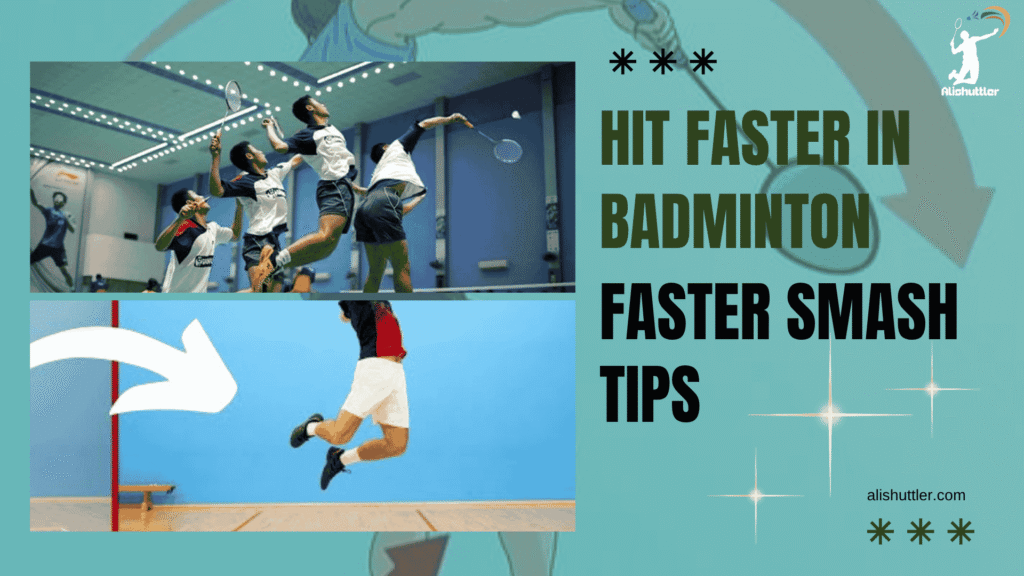
If you have a partner, he or she can feed shuttles while you stand back, working on blocks and quick returns. It helps identify weak areas and follow progress.
Multi-Shuttle
Multi-shuttle drills utilize multiple shuttles simultaneously, enhancing footwork and shot control. Coaches or partners at the net drive shuttles at you fast and you try to return each one.
Maintain your pace, with rest breaks, between 20-second bursts, to create stamina. Mix up the angle and positioning of shuttles to make it more difficult.
Occasionally, have two players on one side, powering shuttles crosscourt or straight for 10 minutes or so! These drills have the speed and chaos of a real game, but are simple to scale up or down for any skill level.
Track your drill performance—count shots, mark mistakes and track how your speed evolves from week to week. This assistance helps you maintain your training targeted and identify where you lose speed or accuracy.
Reaction Time
Reaction drills are designed to hone your response to quick action. Pair up and let someone feed shuttles randomly to either side, or yell out directions as you volley. This compels you to move your feet and make instantaneous decisions.
Use a combination of visual (watching the shuttle) and audio (call/clap). Try drills such as late shots on a full court with 12–16 shuttles, or fast sprints between lines.
Studying your response times can reveal which movements or cues delay you, so you can address them.
Match Drill Examples
- Drive rallies: Hit back and forth with a partner as fast as possible for 10 minutes.
- 2-on-1 drives: Two players feed rapid shots, one returns, to test speed and control.
- Shuttle sprints: Run between front and back lines, picking up shuttles quickly, for 20 seconds, then rest for 30 seconds.
- Double jumps: Do repeated jumps for set periods to build explosive power.
The Pro Player’s Edge
Pro badminton players achieve speed by combining talent, psychological toughness, and the right racket. Their edge originates from years of focused practice, disciplined training routines, and intelligent application of badminton training techniques. To hit faster, these players optimize every nuance, from smash technique to psychological preparation.
Racket Customization
Discovering the correct racket setup really impacts how fast you can hit the shot! Players try rackets with various weights and balance points—some favor head-heavy rackets for smash power and others like lighter, even-balanced rackets for rapid defense. Tuning your strings makes a difference, too. High tension provides greater control but less power, and lower tension provides more punch but can be more difficult to manage.
Most veterans, however, advise experimenting with a few setups before choosing one. Practicing with an oversize or heavy racket or one strung loosely can build strength and help smashes survive longer without a string-break.
To compare typical racket customization options and their effects:
| Option | Effect on Speed | Effect on Control | Notes |
|---|---|---|---|
| Head-heavy racket | Increases power | Reduces maneuver | Popular for strong smashes |
| Even-balance racket | Balanced | Balanced | Good for all-round play |
| Light racket | Faster swings | Less power | Helps with quick rallies |
| High string tension | Less rebound | More control | Needs strong technique |
| Low string tension | More rebound | Less control | Suits beginners, reduces string break |
| Heavier training racket | Builds strength | Slower in matches | Used mainly for practice |
Mental Rehearsal
Visualizing perfect shots increases confidence before and during matches. Most high-level players incorporate mental rehearsal into their daily training, envisioning themselves scoring points with quick, precise strikes. This aids in focus-lock and hard-mind preparation.
Relaxation techniques, such as calm breathing, allow players to remain cool under pressure, which is crucial when engaging in lengthy, intense rallies. Going back over old games aids in catching mental lapses and provides direction on what to practice next.
Deceptive Speed
Pro players cheat to remain ahead. They hide their shot intent—using the same body motion for a drop and a smash, for instance. Varying shot speeds in play keeps your opponents off guard, unable to predict your next move.
Feints and last-second direction changes make a huge difference, frequently causing errors from across the net. After playing each game, players analyze how adversaries respond to these strategies and adjust their style for optimal impact.
Learning from the Pros
Observing top level matches gives you a peek into advanced moves and training habits. A lot of champs began early and play nearly every day, combining smash drills, footwork circuits, and gym time.
Training footwork in sand builds leg strength, propelling him to shuttle speeds exceeding 257 km/h. Pro players grind through hard training, occasionally sore for days, but it’s what separates them.
Final Thoughts on Hit Faster in Badminton
Faster shots require a combination of quick movements, proper technique, and powerful legs. Everything from the right swing to speed drills. Stay loose, snap your wrist and get your feet in a hurry. Observe pro players for little tips they tend to hit tight swings and glide steps to score points. Easy adjustments to your warm-up or footwork can have a huge impact.
Be patient, monitor your efforts and training, and keep them interesting. Test drive a new drill or tip in your next match, and feel it out. Have a story or tip that works for you? Share it below and assist others in gaining speed on the court.
Frequently Asked Questions
What are the key biomechanics for hitting faster in badminton?
The right bio-mechanics, in other words, utilize your entire body for powerful badminton smashes. Turn your hips, engage your core, and snap your wrist at impact to generate quicker, more forceful strikes.
How can I improve my hitting speed quickly?
Technique, technique, technique. Incorporate various badminton exercises that enhance quick wrist movement and explosive footwork techniques. Regular practice makes faster.
Does footwork affect my hitting speed?
Yes, efficient footwork techniques enhance your positioning for each shot. Great footwork allows you to arrive at the shuttle faster, prepare your swing earlier, and generate more badminton smash speed.
What conditioning exercises help with faster hitting?
Build up your core, shoulders, and forearms with resistance training through various badminton exercises. Some power exercises, like medicine ball throws and plyometric push-ups, assist in increasing smash speed.
Are there specific drills to increase shot speed?
THAT’S right, experiment with multi-shuttle drills and shadow swings as part of your badminton training exercises. These drills will develop your muscle memory and reaction time for quicker badminton shots.
How do professional players hit so fast?
Pro badminton players perfect their smash technique, train explosively, and develop grip strength. They complement this with efficient footwork techniques and eye contact, keeping them ready to react and hit at maximum speeds.
Can beginners learn to hit faster safely?
Indeed, newbies need to begin with badminton training techniques and light strength work. Concentrate on safe motions to enhance your badminton speed and prevent injury.

